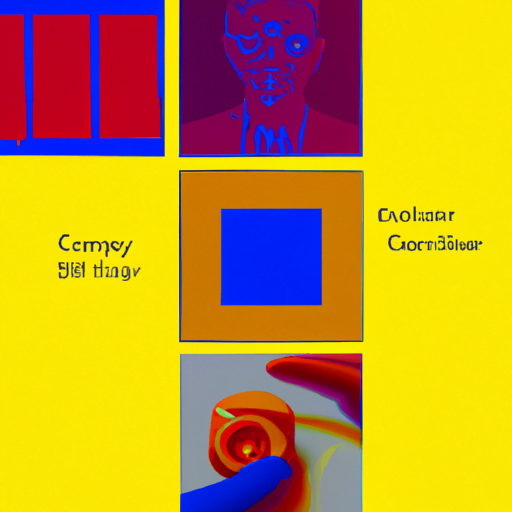
-
Table of Contents
Designing for Multisensory Experiences: Engaging all Senses

In today’s digital age, where screens dominate our lives, it is easy to overlook the power of our other senses. However, as designers, we have the opportunity to create truly immersive and memorable experiences by engaging all of the senses. Designing for multisensory experiences goes beyond just visual aesthetics; it involves creating experiences that stimulate and engage multiple senses simultaneously. In this article, we will explore the importance of multisensory design, its impact on user experience, and how to effectively incorporate it into our design process.
The Power of Multisensory Design
Our senses play a crucial role in how we perceive and interact with the world around us. By engaging multiple senses, we can create experiences that are more memorable, impactful, and emotionally resonant. Research has shown that multisensory experiences have a profound effect on our perception, memory, and overall satisfaction.
For example, a study conducted by the University of Oxford found that multisensory experiences can enhance our memory recall. Participants were shown a series of images accompanied by either a sound or a smell. The study found that when multiple senses were engaged, participants had significantly better memory recall compared to when only one sense was stimulated.
Furthermore, multisensory design has been proven to increase user engagement and satisfaction. According to a study by the University of California, Berkeley, multisensory experiences can evoke stronger emotional responses and create a deeper connection between the user and the product or service. This emotional connection leads to increased user engagement, loyalty, and ultimately, a more positive user experience.
Designing for the Senses
When designing for multisensory experiences, it is important to consider each of the five senses: sight, hearing, touch, taste, and smell. By carefully crafting the sensory elements of a design, we can create experiences that are not only visually appealing but also engage the user on a deeper level.
Sight
Sight is often the most dominant sense, and visual design plays a crucial role in creating a compelling multisensory experience. Here are some key considerations:
- Use color psychology to evoke specific emotions and create a desired atmosphere.
- Employ visual hierarchy to guide the user’s attention and highlight important elements.
- Utilize motion and animation to add dynamism and interactivity to the design.
Hearing
Sound can greatly enhance the user experience and create a more immersive environment. Consider the following when designing for sound:
- Choose appropriate background music or sound effects that align with the overall theme and mood.
- Use audio feedback to provide users with confirmation or feedback on their actions.
- Consider the use of voiceovers or narration to guide the user through the experience.
Touch
The sense of touch adds a tangible and interactive dimension to the user experience. Here are some ways to incorporate touch into your design:
- Use tactile materials or textures that users can physically interact with.
- Consider haptic feedback to provide users with a sense of touch in digital interfaces.
- Design intuitive and responsive touch interactions that mimic real-world interactions.
Taste and Smell
While taste and smell may not be as commonly utilized in digital design, they can still play a role in creating multisensory experiences. Consider the following:
- For food-related experiences, incorporate visuals and descriptions that evoke the taste and smell of the dish.
- Incorporate scents or fragrances in physical spaces to create a specific ambiance or atmosphere.
- Consider the use of virtual reality or augmented reality to simulate taste or smell experiences.
Case Studies: Successful Multisensory Design
Let’s take a look at some real-world examples of successful multisensory design:
1. The Museum of Ice Cream
The Museum of Ice Cream is an interactive art installation that combines visual, tactile, and gustatory experiences. Visitors can explore various rooms filled with vibrant colors, interactive installations, and, of course, ice cream tastings. By engaging multiple senses, the museum creates a playful and memorable experience that appeals to people of all ages.
2. Disney’s Haunted Mansion
Disney’s Haunted Mansion ride is a classic example of multisensory design. The ride combines visual effects, eerie soundscapes, and even scents to create a truly immersive and spooky experience. By engaging multiple senses, Disney transports visitors into a different world and tells a compelling story.
3. Nest Thermostat
The Nest Thermostat is a smart home device that not only looks sleek but also engages the sense of touch. The device features a smooth dial that users can physically turn to adjust the temperature. The tactile interaction adds a sense of control and satisfaction to the user experience.
Conclusion
Designing for multisensory experiences is a powerful way to create memorable and engaging user experiences. By engaging multiple senses, we can evoke stronger emotional responses, enhance memory recall, and create a deeper connection between the user and the design. When designing for multisensory experiences, it is important to consider each of the five senses and carefully craft the sensory elements of the design. By doing so, we can create truly immersive and impactful experiences that leave a lasting impression on the user.
